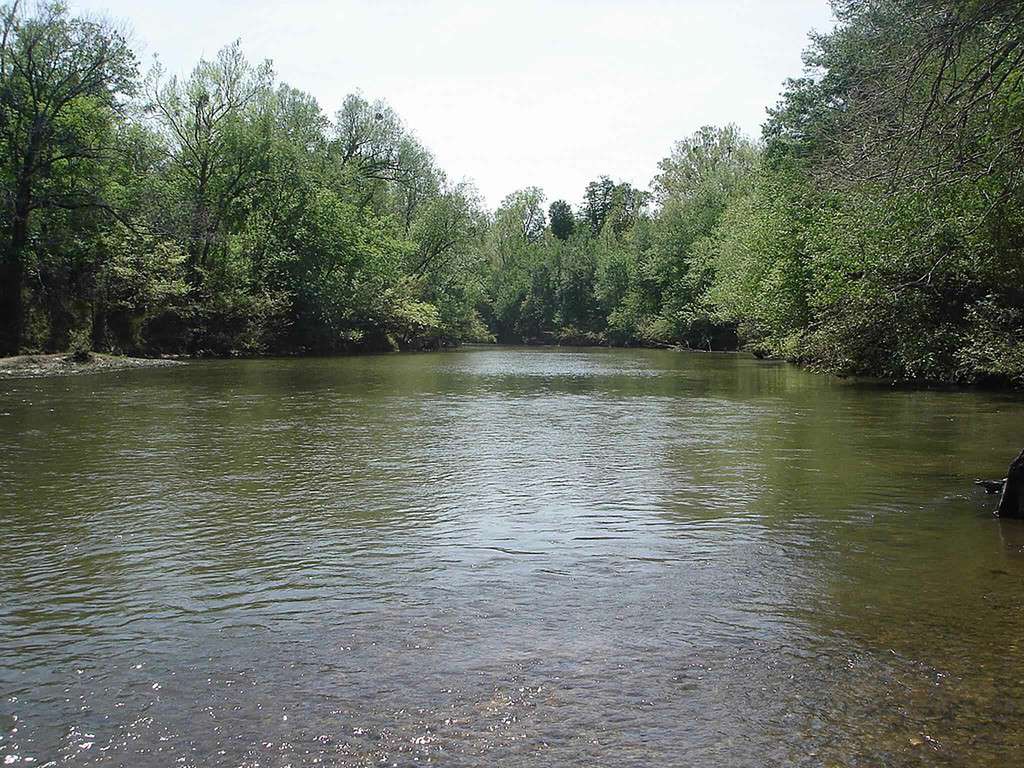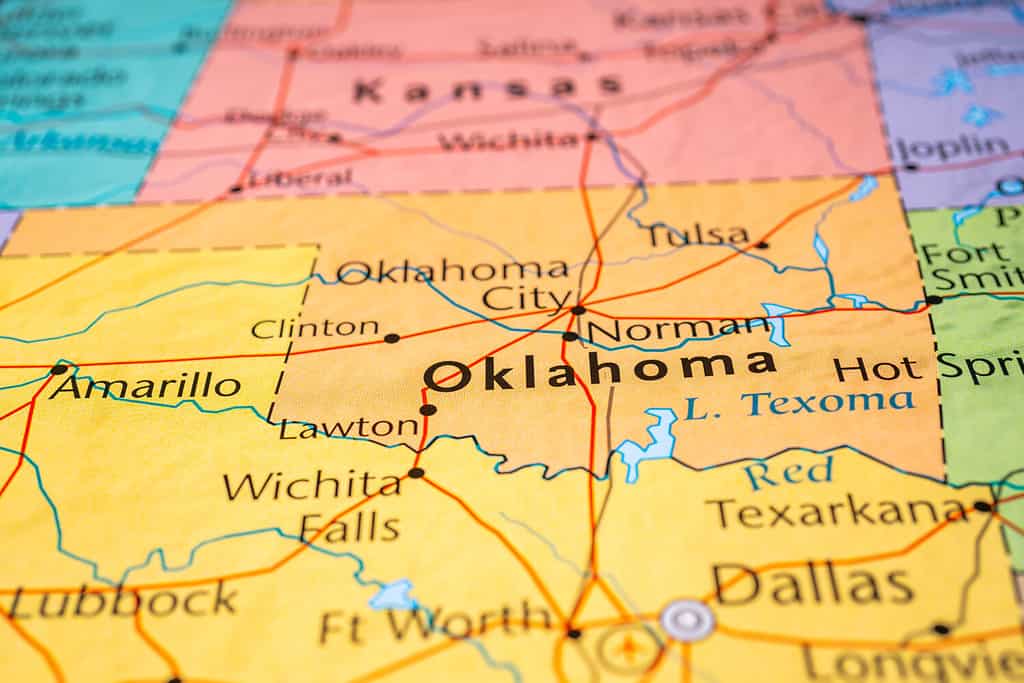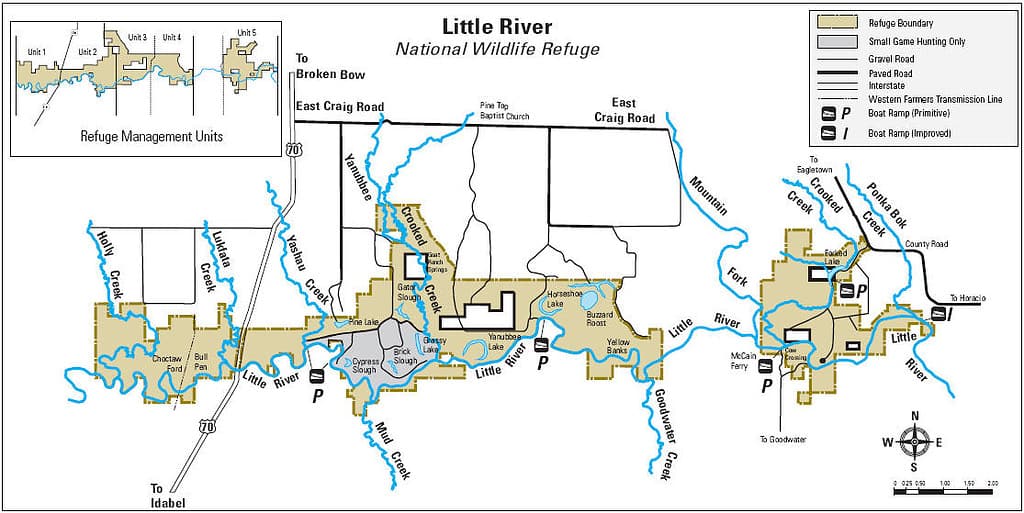Oklahoma is an interior, South Central state of the United States. Located to the north of Texas, it receives cold air from the Rocky Mountains and Canada and hot, dry air from Texas, New Mexico, and Mexico. Oklahoma experiences sweltering summers and bitterly cold winters. These are also the perfect conditions for tornadoes.
The Great Plains in the western portion of Oklahoma transition through the prairie, savannah, and woodlands of Cross timbers to the Ozark Mountains’ foothills and the Mississippi River watershed in the southeast. Few states in the U.S. experience the differences between high and low elevations experienced in Oklahoma. So, what is the lowest point in Oklahoma?
The Lowest Point in Oklahoma
The lowest point in Oklahoma is on the Little River, at 289 feet above sea level, as it passes through McCurtain County in the state’s southeast corner. It later flows into the Red River, which makes its way to Louisiana and the Mississippi River watershed.
The highest point in Oklahoma is the Black Mesa in the northwest corner of the panhandle. This point is 4,973 feet above sea level. The mesa extends into Colorado and New Mexico, as well.

The Little River is the lowest point in Oklahoma.
©U.S. Fish and Wildlife Service / Public domain, via Wikimedia Commons – License
How Was the Little River Formed?
The Little River starts at more than 2,000 feet above sea level in the Ouachita Mountains. This region is the most humid part of Oklahoma, receiving nearly 60 inches of rain annually. As it descends, it collects more water from tributaries, such as the Glover, Mountain Fork, Rolling Fork, Cossatot, and Saline Rivers.
Where Is the Little River Located on a Map?
The lowest point in Oklahoma on the Little River is in the southeast corner of McCurtain County, near the mouth of the Mountain Fork River. This is just before the river flows into Arkansas.
How Did Oklahoma Get Its Name?
Oklahoma gets its name from the Choctaw words for people or nation (okla-) and red (-homma.) The U.S. government forcibly removed the Choctaw people of Oklahoma from the southeast in the 19th to the early 20th centuries along the “Trail of Tears.” The Choctaw Nation in Oklahoma is the second largest reservation in the country, behind the Navajo. The course of the Little River is entirely contained in the Choctaw Nation.

Oklahoma’s name comes from the Choctaw language.
©Alexander Lukatskiy/Shutterstock.com
Towns Near the Little River
There are no towns on the river at the lowest point in Oklahoma, but a few small towns are nearby. Eagletown is a small, unincorporated community with a population of 404 as of the 2020 Census. It was the first permanent settlement of Choctaw in the Indian territory. At one time, it was the county seat of Eagle County before Oklahoma received statehood. Upon statehood, it became just an unincorporated community.
Broken Bow, Oklahoma, has a population of 4,228, according to the 2020 Census. The town was named after the Nebraska town that the town’s founders—the Dierks brothers—came from. The Choctaw nation owned the land before white colonizers from the South settled there, earning the area the moniker “Little Dixie.”
How Does the Little River Benefit Oklahoma?
Though the Little River does provide some drinking water to small communities like Idabel, it functions more as a recreational waterway. As a tributary of the Red River, it carries water from its portion of southeast Oklahoma to the Mississippi watershed.
Recreation at the Little River
Along large sections of the Little River and Mountain Fork River, one of its tributaries, people living in and visiting that corner of Oklahoma come to the waterway for many recreational purposes. Of course, hunting and fishing are popular in the area. There are also many campgrounds and cabin rentals. A variety of businesses in the area rent kayaks and canoes for recreational boating. There is an abundance of wildlife to see in the area, as the Little River in that area is part of the Little River National Wildlife Refuge. Hiking, wildlife watching, and photography are excellent options here.

Little River National Wildlife Refuge
©U.S Fish and Wildlife Service / Public domain, via Wikimedia Commons – License
Wildlife Near the Little River
The wildlife refuge has an incredible diversity of species. Here, you can find reptiles such as the American alligator and the alligator snapping turtle. You will discover paddlefish, rainbow trout, and plains minnows in the river waters. Waterfowl, such as mallards and wood ducks, are encouraged to populate the waterway, and other birds, including golden-winged warblers and rare Swainson’s warblers, live on the wooded shores. The wooded land around the river provides an ideal habitat for coyotes, bobcats, white-tailed deer, raccoons, and opossums.
Conclusion
The lowest point in Oklahoma, the Little River, gathers waters from the south of the state and provides ideal habitats for a diversity of wildlife and recreational opportunities for Oklahomans and visitors.
The photo featured at the top of this post is © U.S. Fish and Wildlife Service / Public domain, via Wikimedia Commons – License / Original
Thank you for reading! Have some feedback for us? Contact the AZ Animals editorial team.






